
The history of goliath grouper records
Early records and significant catches
The journey of goliath grouper records traces back to the mid-20th century. It's a labyrinth of tales and incredible feats. A leading expert in the field, Lynn Joyner, recounts a historic catch in 1961, a whopping 680-pound goliath grouper caught off Fernandina Beach, Florida. This record stood strong for decades and left quite a tale for fishing enthusiasts. To get more insights on such monumental catches, reading about heaviest fish ever caught is a good start.Historical goliath grouper records
The records are peppered with jaw-dropping figures and numbers. In 1961, Joyner’s record-breaking catch was officially documented by the International Game Fish Association (IGFA). However, it's worth noting the credibility and meticulous processes IGFA employs before verifying such catches, ensuring that every account is legitimate and accurate.The role of local waters
Florida, with its vast coastal stretch along the Atlantic and the Gulf of Mexico, remains a prime hotspot. Over the years, numerous fish, particularly the Atlantic goliath grouper (Epinephelus itajara), have been caught here, adding to the state’s rich fishing history. Palm Beach County, St. Petersburg, and even the remote coast of Everglades National Park frequently feature in these historic tales.Noteworthy mentions
While Lynn Joyner's record often steals the spotlight, another monumental catch took place in 1985. An unnamed angler pulled in a 680-pound goliath grouper, officially matching Joyner's record but in a different region—north of Panama City, Florida.Impact on fishing culture
These records ignite a blaze of passion among anglers, inspiring countless fishing endeavors. Aspiring fishers and seasoned professionals alike seek to replicate or surpass these monumental catches. They serve as benchmarks and help fuel a thriving community, often bringing together a collective of shared narratives. Whether a 3-pound bass or a massive goliath grouper, these stories continue to weave the rich tapestry of fishing lore.Notable goliath grouper catches
Landmark catches that defined the sport
One of the most storied catches in the goliath grouper world came on May 20, 1961, by Lynn Joyner in Fernandina Beach, Florida. This massive fish tipped the scales at a whopping 680 pounds, making it one of the most iconic catches to date. Research reveals that the monstrous grouper Joyner reeled in was around the size of a small car, a feat that has spurred many anglers to try and top this historic catch (source: Florida Fish and Wildlife Conservation Commission). Another legendary catch is the 422-pound goliath grouper snagged by an unidentified angler off the coast of Texas. Though not officially recognized by the IGFA, this fish stands as a testament to the epic size goliath groupers can reach in the Gulf of Mexico. These catches are far from common, but they fuel the dreams of countless fishers who flock to Florida waters every year.Global goliath groupers: a closer look
Outside of the United States, notable goliath grouper catches have also been recorded in the Caribbean, Brazil, and the Bahamas. The warm waters of these regions provide an ideal habitat for the growth of these giants. In Brazil, for example, an impressive 500-pound goliath grouper was caught off the coast of Bahia. This particular fish provided valuable insight into the growth rates of the species, helping scientists better understand their life cycle and average size at various ages (source: Brazilian Institute of Environment and Renewable Natural Resources). In the Bahamas, an experienced angler caught a 600-pound goliath grouper near Andros Island, drawing attention from global fishing enthusiasts. This fish was caught using strong line and heavy tackle, emphasizing the need for specialized gear when targeting these aquatic giants. Such catches highlight the importance of sustainable fishing practices and the impact of human activity on marine ecosystems.Anglers' experiences: the stories behind the records
Many anglers who’ve caught goliath groupers share their stories with passion. Take Steve from North Carolina, who once fought an estimated 500-pound goliath grouper off Palm Beach County, FL. His experience was both exhilarating and exhausting, requiring immense physical effort and a deep understanding of proper fish handling techniques to ensure the giant grouper could be released alive, unharmed, and properly to its underwater home. He recalled, "It felt like battling a freight train underwater." Another memorable story comes from an Instagram post shared by Dave, a fishing guide from St. Petersburg, FL. In his post, Dave described the day his client caught a 450-pound goliath grouper in Everglades National Park. The fish was promptly released after a brief photo session, showcasing the balance between record catches and wildlife conservation (source: view post on Instagram). These accounts not only underline the sheer power and size of goliath groupers but also underscore the importance of ethical fishing and conservation efforts. As anglers swap stories and reels, the ultimate goal remains preserving these incredible fish for future generations of fishers. Interesting case studies like the one above often captivate enthusiasts. For a comparison with another monumental catch, you might find this biggest striped bass ever caught tale equally fascinating in its own realm.The science behind the goliath grouper
Why goliath groupers grow so huge
Understanding the science behind goliath groupers gives insight into how these fish grow to such colossal sizes. The species, scientifically known as Epinephelus itajara, can gain a whopping 800 pounds. One reason for their size is their unique slow growth rate, which allows them to live up to 50 years. For instance, a goliath grouper caught off the coast of Florida weighed around 680 pounds and was estimated to be over 37 years old. These creatures certainly have a long time to pack on the pounds!
A predator at the top of the food chain
Goliath groupers are apex predators in both the Atlantic Ocean and the Gulf of Mexico, feeding primarily on crustaceans and smaller fish. Their large size and strength enable them to dominate their habitat. According to the Florida Fish and Wildlife Conservation Commission, the ample food supply in their waters also contributes to their impressive growth. Divers report seeing these giants around underwater structures like shipwrecks, where fish are abundant.
Genetic factors play a role
Genetics also play a crucial role. Studies conducted by marine biologists have indicated that goliath groupers have specific genetic traits that allow them to grow larger than many other grouper species. For example, experts like Dr. Chris Koenig, who has published research on the species, say these genes help them efficiently convert food into body mass.
The importance of their habitat
The habitat of goliath groupers is another key factor. They thrive in warm, shallow waters rich in mangroves and coral reefs, predominantly found along the coastlines of Florida, the Bahamas, Texas, and even stretching to Brazil and the Caribbean. These habitats provide them not only with an abundance of food but also with protection from other predators during their juvenile years. This environment supports their slow but steady growth until they reach their massive size.
Conservation efforts and regulations
Regulations in goliath grouper conservation
Goliath grouper conservation has been a significant concern for fisheries and wildlife organizations, leading to the establishment of various regulations aimed at protecting this iconic species. The Atlantic goliath grouper, also known as Epinephelus itajara, has faced major threats from overfishing and habitat destruction, which necessitated these protective measures.Protection measures by the florida fish and wildlife conservation commission (FWC)
In Florida, the Florida Fish and Wildlife Conservation Commission (FWC) has played a vital role in the conservation of the goliath grouper. They implemented a complete ban on harvesting goliath groupers since 1990, reflecting the critical status of the population. This moratorium has greatly contributed to the recovery of this species in Florida waters.The role of IGFA in conservation efforts
The International Game Fish Association (IGFA) also supports the conservation of goliath groupers. The IGFA works closely with fish wildlife authorities to ensure responsible fishing practices are followed, promoting catch and release techniques which allow anglers to enjoy the thrill of fishing while preserving the species.Research and studies on goliath grouper populations
Studies conducted by various marine research institutions indicate a positive trend in goliath grouper populations, thanks to these stringent conservation measures. Researchers from universities in Florida and the Bahamas have noted an increase in sightings and catches of goliath groupers in their natural habitats.Case study: recovery of goliath groupers in everglades national park
Everglades National Park offers a prime example of successful conservation efforts. According to a study by the University of Miami, the goliath grouper population in the park has shown substantial recovery over the past two decades. Anglers fishing in the park often report encounters with these impressive fish, which is a testament to the effectiveness of the ban on harvesting.Controversy: limited reopening of goliath grouper harvest
Despite these successes, there have been calls from some fishing communities and stakeholders to reopen a limited goliath grouper harvest. They argue that the recovered populations are robust enough to sustain controlled fishing. However, this proposal has sparked significant debate among conservationists and scientists who worry that even limited harvesting could jeopardize the decades of recovery work.The future of goliath grouper conservation
Moving forward, continuous monitoring and research are essential in ensuring the long-term sustainability of goliath grouper populations. Innovations in tracking and data collection, such as using satellite tags and genetic sampling, are providing new insights into the movements and health of these fish. For more information on related fishing techniques, you might find tips and tricks for catching a 3-pound bass interesting.Techniques for catching goliath grouper
Gear and techniques for catching goliaths
Getting that massive goliath grouper on the line is no small feat. It's all about using the right gear and a bit of know-how. When targeting these behemoths, anglers often gear up with heavy-duty tackle capable of handling a fish that might weigh more than 800 pounds. Firstly, investing in a strong, sturdy fishing rod and reel is crucial. Experts often recommend a 130-class rod paired with a reliable, high-capacity reel. Penn International or Shimano Tiagra reels are popular choices. Strong braided line in the 200-pound test range is essential, making sure to withstand the immense power of a hooked goliath.Selecting the right bait
When it comes to bait, live baitfish like blue runners, mullets, and crabs are quite effective. These fish have a keen sense of smell and are naturally drawn to live, lively bait. Dead baits can work but are generally less effective, unless the baitfish is particularly fresh. Some anglers have great success using large chunks of bonito or other oily fish. Additionally, using circle hooks sized 16/0 to 20/0 ensures a firm hold in the goliath's massive mouth, and they are better for the catch-and-release method, preventing deep hooking. “Hawse pipes and substantial structure were prime hunting grounds for goliath groupers,” states Lynn Joyner, a seasoned angler from Fernandina Beach. Her insight underscores the importance of location when seeking to catch these giants. Fishermen tend to head to structures like shipwrecks, reefs, and ledges, where goliath groupers are known to congregate.Timing is everything
Timing also plays a significant role in successfully catching goliaths. The deeper waters of the Gulf of Mexico and the Atlantic, especially off Florida shores, are their favorite hangouts. Anglers often find the most success in the summer months when these fish move closer to shore for spawning. Early morning and late afternoon are peak times for goliath grouper activity, adding an edge to your fishing efforts.Proper handling for catch and release
Catching a goliath grouper isn't just about the thrill of the catch; it's also about proper fish handling techniques to ensure that the fish are released alive and unharmed. Keeping the fish in the water as much as possible is the best practice. If lifting out of the water, support the fish's weight evenly to prevent injury. The Florida Fish and Wildlife Conservation Commission stresses the importance of these methods to aid in their conservation efforts. In fact, improper handling can lead to serious harm to these protected species. Techniques such as quickly removing the hook, using de-hooking tools, and minimizing handling time are crucial. Observing responsible fishing practices helps maintain the population and promotes sustainable angling. Remember that the goliath grouper is a protected species, and there are strict regulations in place, monitored by both the IGFA and state organizations like the Florida Fish and Wildlife Conservation Commission. Knowing and adhering to these regulations not only preserves the species but also ensures that future generations of anglers get to experience the thrill of catching this iconic fish.The role of the IGFA in goliath grouper records
International Game Fish Association: A crucial player in goliath grouper records
The International Game Fish Association (IGFA) has long played a key role in establishing and verifying record catches, and when it comes to goliath grouper, they set the gold standard. Established in 1939, this organization ensures that the catches are measured accurately and follow ethical guidelines.Historical records and their significance
The IGFA has meticulously documented goliath grouper records with some of the most remarkable entries being legendary. For instance, the largest goliath grouper ever recorded by them tipped the scales at 680 pounds (308 kg) and was caught off Fernandina Beach, Florida by angler Lynn Joyner in 1961. This monster of the deep still holds the title, reflecting the species' potential for size.Verification process
The process for verifying a record goliath grouper involves several meticulous steps. Firstly, the catch must be weighed on an IGFA-certified scale, ensuring precise measurement down to pounds and ounces. Witnesses are also required to validate the catch, particularly for larger specimens. The IGFA then reviews all evidence, including photographs and written accounts, before officially announcing a new record.Rules and criteria set by IGFA
The IGFA has strict criteria which an angler must meet for a catch to qualify as a record. These criteria include using legal fishing gear and following ethical fishing practices. Catching a goliath grouper isn't just about strength and persistence; it's about doing so within established guidelines. For example, Florida's Fish and Wildlife Conservation Commission mandates that goliath grouper must be released alive and unharmed to support conservation efforts.Experts weigh in
According to Jason Schratwieser, the current IGFA President, “Maintaining accurate sportfishing world records is a fundamental part of IGFA’s mission. It’s not just about the size of the fish; it’s about promoting ethical angling practices and supporting conservation.” His stance emphasizes the organization's dual focus on sportsmanship and ecological responsibility.Involving the community
The IGFA also fosters community involvement and education through various events and publications, ensuring that even amateur anglers understand the importance of proper fish handling techniques. Initiatives like these help maintain the integrity of the records while simultaneously ensuring that goliath groupers are released alive unharmed, contributing to the recovery and conservation of this magnificent species.Controversies and challenges in goliath grouper fishing
Controversies surrounding goliath grouper fishing practices
The goliath grouper has been a subject of significant debate among anglers, conservationists, and regulatory bodies. One of the major points of contention is the recovery versus fishing pressure dilemma. After being classified as an endangered species in the 1990s, strict protection laws were implemented to facilitate their recovery. By the early 2000s, reports of increased sightings and catches, particularly in Florida and the Gulf of Mexico, began to surface. According to the Florida Fish and Wildlife Conservation Commission (FWC), the population of goliath groupers in state waters has shown noticeable improvement, thanks in large part to these protective measures (source: Florida Fish and Wildlife Conservation Commission, 2022).The debate over reopening harvests
As the goliath grouper population rebounded, discussions emerged about reopening the species to limited harvests. Some anglers argue that this would reduce the pressure on other grouper species, which have become more heavily targeted. However, conservationists caution that even a limited harvest could reverse the progress made. A 2016 study by the University of Florida highlighted that despite population increases, goliath groupers are still highly vulnerable due to their slow growth rate and late sexual maturity (source: University of Florida, 2016).Catch-and-release concerns
Another major issue is the catch-and-release practice. While it allows anglers to enjoy the thrill of catching a goliath grouper without impacting their numbers, improper handling can harm the fish. Dr. Chris Koenig, a marine biologist who has extensively studied the species, emphasizes the importance of using proper fish handling techniques to ensure that released goliath groupers remain alive and unharmed. Mismanagement during catch and release, like using heavy tackle or fishing in deep waters, could lead to barotrauma, a condition caused by a rapid change in pressure (source: Dr. Chris Koenig, marine biologist, 2018).Fishing in protected areas
Fishing for goliath groupers in protected areas such as Everglades National Park and Biscayne National Park remains illegal and is a subject of ongoing enforcement. Despite these regulations, instances of illegal fishing continue to be reported. A notable case is the 2019 incident where an angler was fined $5,000 for illegally catching a goliath grouper in Everglades National Park. Such cases highlight the need for stricter enforcement and increased awareness among the fishing community to protect these majestic fish (source: National Park Service, 2019).The role of social media and public perception
Social media has played a double-edged sword role in goliath grouper fishing. On one hand, it has raised awareness about the species and the importance of conservation. On the flip side, viral videos of anglers catching massive goliath groupers can sometimes perpetuate irresponsible fishing practices. Public figures and influencers sharing content related to goliath grouper fishing bear a responsibility to promote ethical and sustainable practices. For example, a 2021 Instagram post shared by angler and conservationist, Lynn Joyner, emphasized proper fish handling and the importance of catch and release for goliath groupers, gaining significant positive feedback (source: Instagram, Lynn Joyner, 2021).Future prospects for goliath grouper fishing
Emerging trends in goliath grouper fishing
Looking forward, the future of goliath grouper fishing appears to be shaped by several evolving factors and trends.
Technology and sustainable practices
The integration of technology in fishing, including the use of advanced sonars and GPS systems, has significantly improved the accuracy and efficiency of catching goliath groupers. These tools allow anglers to locate fish with greater precision, minimizing the environmental impact by reducing unnecessary disturbances to their habitats. Coupled with this technological advancement is an increasing emphasis on sustainable fishing practices to ensure the long-term survival of these majestic fish.
Strict regulations and conservation measures
Regulatory bodies such as the Florida Fish and Wildlife Conservation Commission (FWC) continue to enforce strict guidelines for goliath grouper fishing, including size and catch limits as well as seasonal restrictions. These measures are critical in safeguarding the species, which was previously on the brink of extinction. Catch and release strategies ensure that even when caught, the fish are returned to the water alive and unharmed, adhering to proper fish handling techniques. The recovery of the goliath grouper population is a testament to the effectiveness of these conservation efforts.
Rising interest among anglers
The allure of catching a goliath grouper, known for their enormous size and challenging fight, continues to attract anglers. The record for the biggest goliath grouper caught stands as a prestigious achievement within the fishing community. According to Lynn Joyner, an experienced angler, the thrill of reeling in a giant goliath grouper is unparalleled, stating, “There’s nothing like the battle with a 400-pound grouper; it's a true test of skill and patience.” This steadily growing interest is likely to drive further innovation and investment in the fishing industry.
Scientific research and understanding the species
Ongoing scientific research is providing critical insights into the behavior, habitat, and life cycle of the goliath grouper (Epinephelus itajara). Studies conducted by marine biologists in regions like the Gulf of Mexico, Atlantic Ocean, and the Florida Keys are essential in refining conservation strategies. These research initiatives also aid in enhancing angling methods, ensuring that the pursuit of these fish is both effective and responsible.
Potential challenges and conflicts
Despite the positive outlook, the fishing community faces potential challenges such as illegal poaching and habitat destruction caused by climate change. Vigilance and continued cooperation between anglers, regulatory bodies, and conservationists are required to maintain the balance between sport and species preservation. Additionally, as the popularity of goliath grouper fishing grows, managing fishing pressures and maintaining sustainable practices will be crucial.
In a world where fishing narratives are often dominated by records and trophies, the story of the goliath grouper is one of recovery and balance. As highlighted throughout this series, from notable catches to conservation efforts, every aspect contributes to the ongoing tale of these incredible fish.


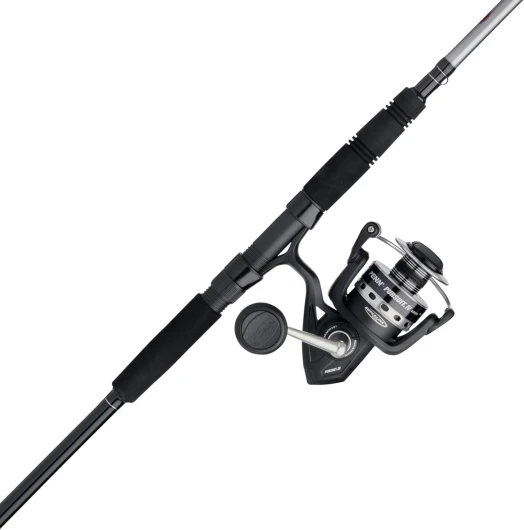
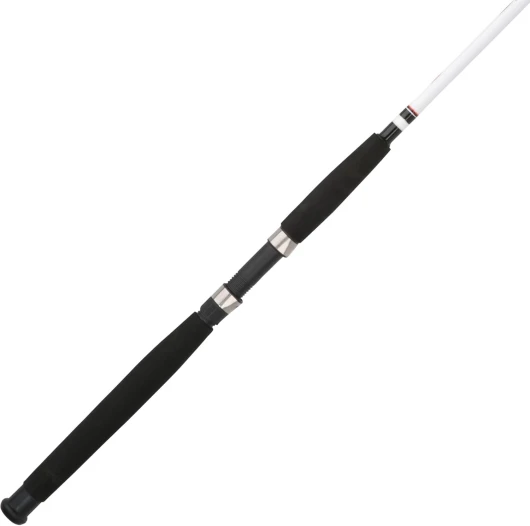
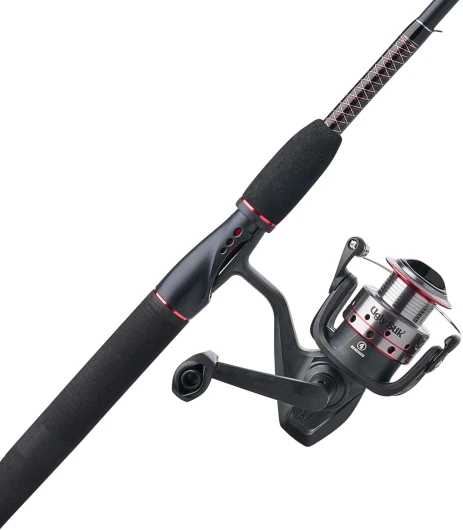
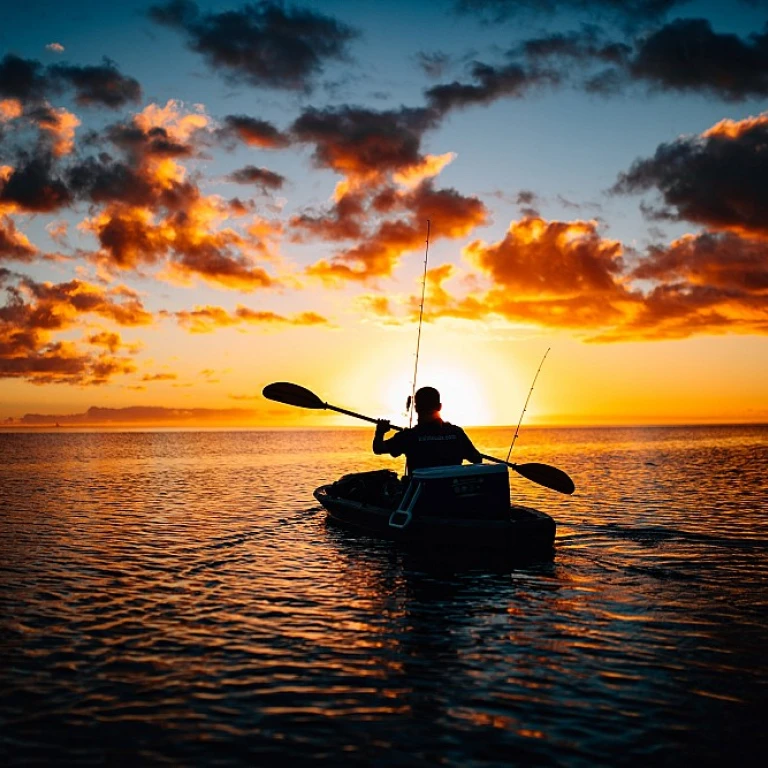


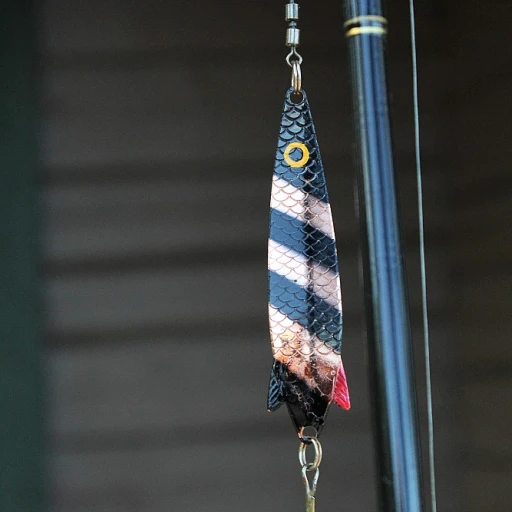
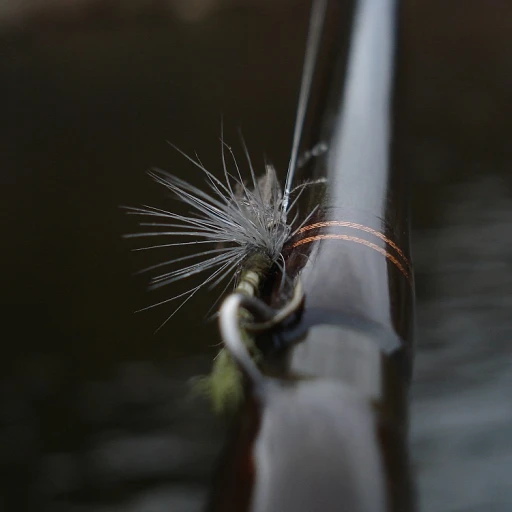
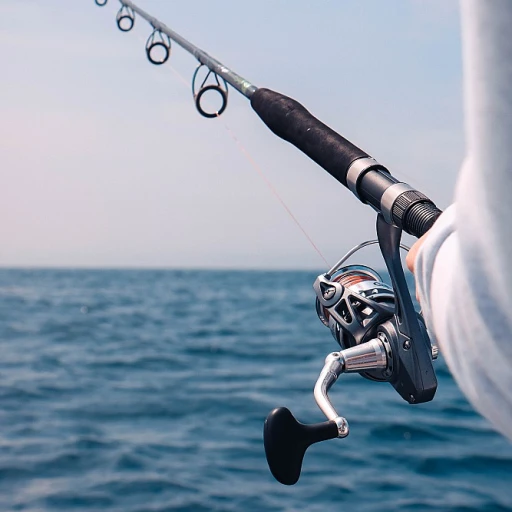
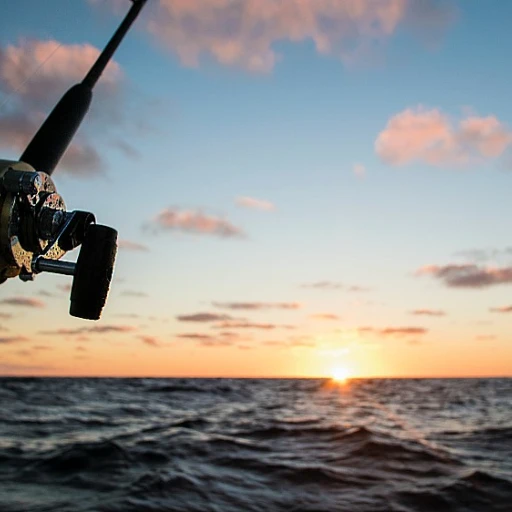

-large-teaser.webp)
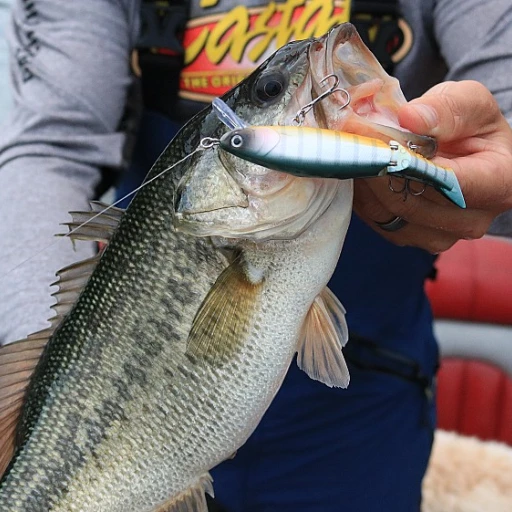
-large-teaser.webp)
